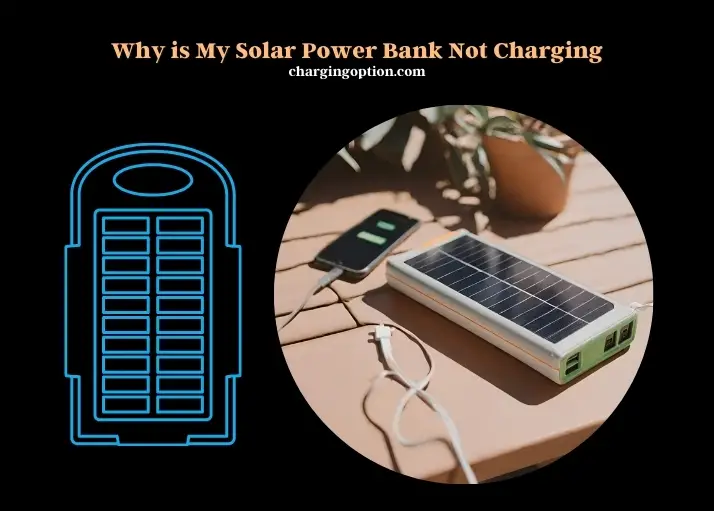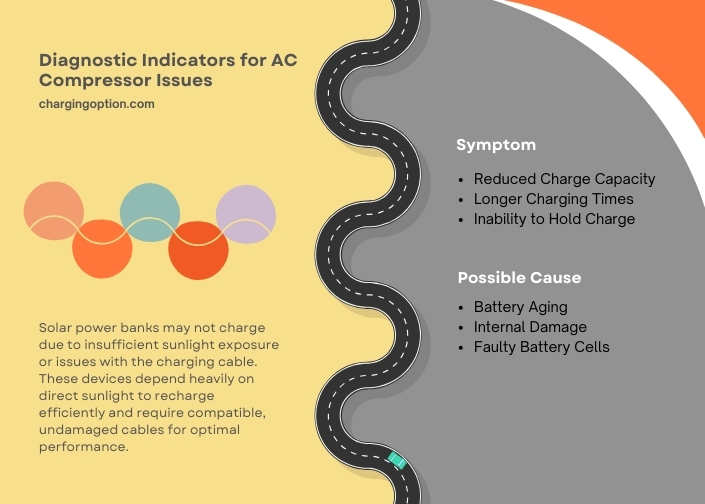Solar power banks may not charge due to insufficient sunlight exposure or issues with the charging cable. These devices depend heavily on direct sunlight to recharge efficiently and require compatible, undamaged cables for optimal performance.
Solar power banks have become indispensable tools for those on the go, offering a renewable way to keep electronic devices charged.
Users often encounter challenges that prevent their power banks from charging properly. Beyond the basic issues of sunlight availability and cable integrity, several factors can impact the charging process. For instance, the cleanliness of the solar panel is crucial; a layer of dust or debris can significantly reduce its effectiveness.
The ambient temperature plays a role; extreme cold or heat can affect battery performance and, in some cases, stop the charging process altogether.

User habits also contribute to charging issues. Incorrect initial charging, overcharging, and allowing the battery to fully deplete can all shorten the lifespan of a solar power bank.
Internal faults within the power bank, such as damaged circuits or battery failure, can prevent it from charging, even under ideal conditions.
These potential pitfalls and how to address them can greatly enhance the user experience, ensuring that solar power banks remain reliable companions for powering devices wherever sunlight is available.
Sunlight’s Role in Solar Charging
Solar power banks rely heavily on adequate sunlight to function efficiently. The intensity and duration of sunlight exposure are pivotal for the charging process. Geographic location plays a significant role, as areas closer to the equator receive more direct sunlight compared to those further away.
Seasonal variations also affect sunlight availability, with summer months offering longer daylight hours than winter. Weather conditions, including cloud cover and rain, can significantly reduce solar radiation reaching the power bank.
The positioning of solar panels towards the sun directly impacts the amount of energy absorbed. Ensuring your solar power bank is placed in optimal conditions for sunlight exposure is crucial for its effective charging.
The Importance of Using the Right Cable
The efficiency of a solar power bank can be compromised by using a faulty or incompatible charging cable. Manufacturer-recommended cables are designed to match the specific power requirements of the device, ensuring safe and efficient charging.
Signs of cable failure include visible wear and tear, slow charging speeds, and the device not charging at all. Regular inspection of cables for any damage and conducting integrity tests can prevent charging issues. It’s advisable to replace damaged or lost cables with those approved by the power bank’s manufacturer to maintain charging efficiency.
Battery Health and Longevity
The internal battery’s condition significantly influences the performance of solar power banks. Over time, batteries undergo degradation, which can manifest as reduced charge capacity, longer charging times, or an inability to hold charge.
Factors contributing to battery degradation include the number of charge cycles, exposure to extreme temperatures, and improper charging practices. Regular maintenance and following manufacturer guidelines can help prolong battery life, ensuring the solar power bank remains reliable over time.
Signs of Battery Degradation
| Symptom | Possible Cause |
| Reduced Charge Capacity | Battery Aging |
| Longer Charging Times | Internal Damage |
| Inability to Hold Charge | Faulty Battery Cells |

Temperature Effects on Charging
Solar power banks are sensitive to temperature extremes. Both high and low temperatures can affect the charging process and device functionality. Optimal charging temperatures range from 15°C to 25°C (59°F to 77°F).
Charging outside these temperatures can lead to reduced efficiency or potential damage. Protecting your device from extreme temperatures by storing it in a cool, dry place when not in use is essential for maintaining its charging capability and overall health.
Optimal Charging Conditions
| Condition | Ideal Range |
| Sunlight Intensity | Moderate to High |
| Charging Temperature | 15°C to 25°C (59°F to 77°F) |
| Charging Duration | 6-8 hours |
Correct Charging Practices
Improper charging habits can lead to issues with solar power banks. Initial charging, according to manufacturer instructions, sets the foundation for the device’s battery health. Overcharging or allowing the battery to deplete entirely before recharging can harm its longevity.
Regular maintenance, including cleaning the solar panels and ensuring the charging port is free from debris, is vital. Adopting correct charging practices ensures the device operates efficiently, providing reliable power when needed.
FAQs
Is Your Solar Panel Clean?
Dirt and debris on the solar panel can significantly reduce its efficiency. Solar panels need direct exposure to sunlight to charge effectively. Dust, leaves, or any other form of cover that blocks sunlight can prevent your solar power bank from charging.
Regularly cleaning the solar panel surface ensures that it can absorb maximum sunlight. Use a soft, damp cloth to gently wipe away any dirt without scratching the panel surface. Keeping the solar panels clean helps maintain optimal charging conditions and prolongs the device’s lifespan.
Are You Using the Solar Power Bank Correctly?
Misunderstanding how to use a solar power bank can lead to charging issues. It’s essential to read the manufacturer’s instructions carefully. Some solar power banks require activation or specific settings to start charging.
Ensure the device is exposed to direct sunlight and not just daylight. Indirect sunlight through a window, for example, may not be sufficient. Also, check if the power bank has a mode switch that needs to be set for solar charging. Proper usage according to the guidelines ensures the device charges efficiently.
Could Overheating Be the Issue?
Solar power banks exposed to excessive heat can experience charging problems. High temperatures can trigger safety mechanisms that shut down charging to protect the battery. If your device has been in direct sunlight for an extended period, it might have overheated.
Allow the power bank to cool down in a shaded area before attempting to charge it again. Avoid leaving the power bank in places like a car dashboard, where temperatures can soar. Keeping the device at a moderate temperature ensures it charges properly and extends its battery life.
Is the Power Bank Fully Charged?
Sometimes, the issue might be as simple as the solar power bank already being fully charged. Some devices have indicators that show charging status, but these can be misleading or malfunction. Try using the power bank to charge a small device to see if it discharges.
If it does, the solar power bank might have been fully charged, and the indicators were not showing the correct status. Regularly monitoring the device’s charge level can prevent misunderstandings about its charging status.
Are You Expecting Too Much Too Soon?
Solar charging is generally slower than charging via an electrical outlet. Environmental factors, such as cloud cover, the angle of the solar panels to the sun, and the time of year, can all affect charging speed.
It’s important to have realistic expectations regarding the charging time of your solar power bank. In optimal conditions, charging can still take several hours. Patience is key when relying on solar power; allow ample time for your device to absorb sunlight and convert it into electrical energy.
Is There an Internal Fault?
Internal faults within the solar power bank, such as circuitry issues or battery failure, can prevent it from charging. These problems might not be immediately apparent and could require professional diagnosis.
If you’ve ruled out external factors and the device still won’t charge, it may be time to contact the manufacturer for support. Warranty or repair services can address internal faults. Regularly inspecting the device for signs of wear and tear can help identify potential issues before they lead to charging problems.
Summary
Solar power bank charging issues can stem from various factors, including insufficient sunlight exposure, the use of faulty or incompatible cables, internal battery degradation, the impact of temperature extremes, and incorrect charging practices.
These factors and adopting measures to mitigate their effects can enhance the charging efficiency and lifespan of solar power banks. Regular maintenance and adherence to recommended charging practices are essential for ensuring your solar power bank remains a reliable energy source.
